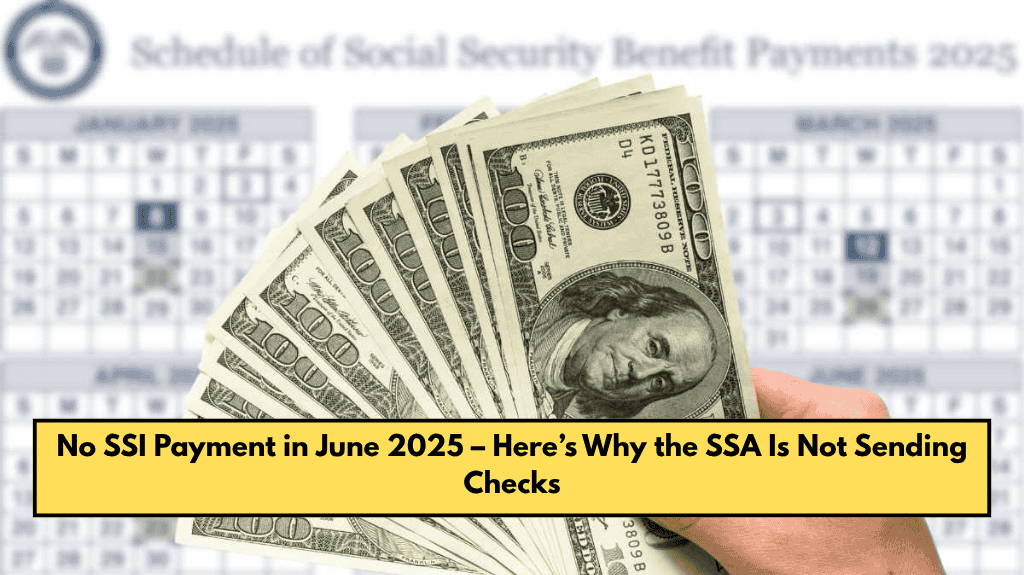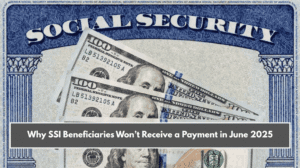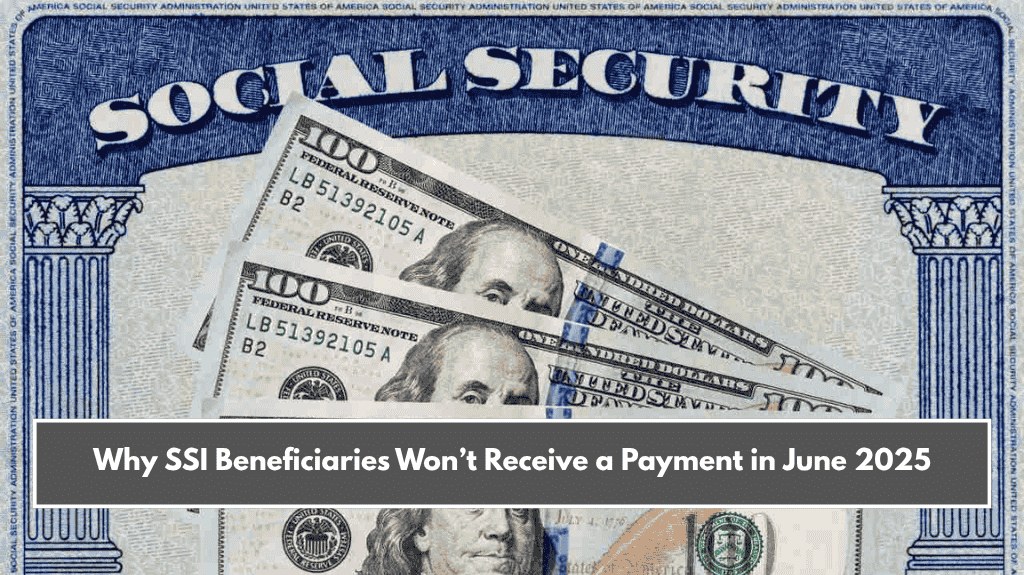Many people who receive Supplemental Security Income (SSI) in the United States were surprised to hear that no SSI payment will be sent in June 2025. Social media is full of confused messages, with some people fearing that their benefits have been reduced or taken away. But the truth is much simpler—and there’s no reason to panic.
In this article, we’ll explain why there’s no SSI payment in June, how the payment system works, and what to expect if you’re an SSI recipient.
Why No SSI Payment in June 2025?
According to the Social Security Administration (SSA), there will be no SSI payment in June because of a calendar adjustment. Here’s what happened:
The first day of June 2025 falls on a Sunday. When the 1st of the month is a weekend or a public holiday, SSI payments are sent earlier, on the previous business Friday.
In this case, June’s payment was sent on Friday, May 30, 2025. So, while it looks like two payments were made in May (one for May and one for June), there will be no deposit in June. This is a routine schedule change, not a loss of benefits.
SSA Clarifies: It’s Not an Extra or Bonus Payment
Some recipients wrongly believe they received a bonus or extra check. But according to SSA officials, it’s not an additional payment—just an early one. The SSI system works based on a fixed calendar, and these kinds of early payments happen multiple times every few years.
The May 30 payment is meant to cover June, and there will be no payment on June 1. The SSA advises all recipients to manage their budget by tracking these schedule changes and not assume they’ve received more money than usual.
How Much Is the SSI Payment in 2025?
As of 2025, the maximum SSI payment amounts are:
- $967 per month for individuals
- $1,450 per month for eligible couples
These amounts can change based on income, living situation, or any inflation-related adjustments. Remember, if your income increases or your financial status changes, the SSA may adjust your SSI benefit.
It’s always a good idea to check your my Social Security account online to confirm your deposit dates and amounts. If you find any issues, you can contact your local Social Security office for clarification.
Tools to Help Track Payments
To avoid confusion, the SSA recommends using:
- Bank alerts to notify you when a deposit is made
- Physical calendars to mark expected payment dates
- Online guides from trusted sources like NerdWallet and USA Today for updates
Managing your benefits properly can help you avoid spending issues, especially in months when payments arrive earlier than expected.

Who Qualifies for SSI Payments?
Not everyone is eligible for Supplemental Security Income. The program is designed to help those with low income and limited resources who also meet one of the following criteria:
Adults aged 65 and above:
They do not need to have a disability, but must prove that their income and savings are very low. Personal homes and basic cars are not counted as resources.
People with disabilities (any age):
A medically proven disability that prevents working for at least 12 months or is expected to be terminal. This includes both adults and children under 18.
Persons who are blind or have severe vision loss:
This must meet the SSA’s definition of blindness—vision of 20/200 or less in the better eye, even with glasses.
Other Requirements:
You must be a U.S. citizen, or belong to certain legal categories like refugees. In addition, the resource limits are $2,000 for individuals and $3,000 for couples (excluding your home, car, and personal belongings).
Final Thoughts: Your June SSI Payment Is Not Missing, Just Early
There’s no need to worry if you don’t receive your SSI deposit in June 2025. That money was already sent to you on May 30, ahead of schedule. This happens whenever the 1st of the month falls on a weekend or holiday. While it might feel confusing, it’s all part of the SSA’s regular system to make sure you still get your money on time.
To stay on top of your benefits, always check your deposit history and plan your monthly budget by assigning each payment to its correct month—even if it arrives a few days early.















